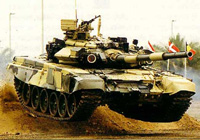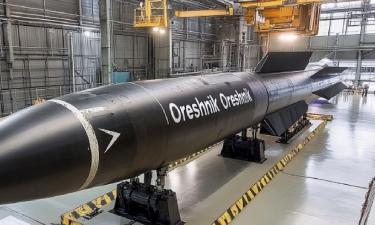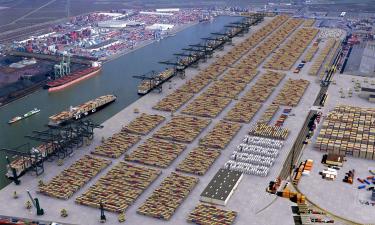Russia deploys T-90 tanks near Georgia's borders
Russia has started delivering military hardware, including up-to-date T-90 gun-missile launcher armed tanks to Russian army bases in South Ossetia and Abkhazia – the two republics, which suffered from Georgia’s aggression in August 2008. The arms deliveries were launched in accordance with the defense cooperation agreement between Russia, Abkhazia and South Ossetia. The agreement is to be signed within the forthcoming one or two weeks, The Vedomosti newspaper wrote.

The agreement will regulate the status of the Russian army bases in the republics. The bases will be deployed in the two republics for 49 years free of charge.
Russia has already started sending its military hardware to the army base in Abkhazia. The missile defense system of the base will be strengthened with the help of long-range surface-to-air missile complexes.
There will be 3,700 military men serving at each of the two bases. A naval base will be organized in Abkhazia for smaller vessels of the Russian Black Sea Navy. Several warplanes and helicopters will be deployed at the republic’s airbase in Gudauta.
Georgia launched a massive military operation against South Ossetia in August 2008. Russia gave an adequate response to Georgia’s aggression after many Russian citizens and military men were killed in the attacked republic. When the operation was completed, the Kremlin officially recognized the independence of South Ossetia and Abkhazia.
The prelude to the conflict began with violent clashes on Wednesday, 6 August 2008 with both sides claiming having been fired upon by the other. The Georgian interior ministry claimed Georgian forces had returned fire only after South Ossetian positions shelled Georgian-controlled villages and accused the South Ossetian side of "trying to create an illusion of serious escalation, an illusion of war." South Ossetia denied provoking the conflict.
Over the course of several days in early August, the Georgians secretly concentrated a significant number of troops and equipment, including the full 2nd, 3rd and 4th Infantry Brigades, the Artillery Brigade, the elements of the 1st Infantry Brigade, the separate Gori Tank Battalion, among others — all in all, up to 16,000 men — in the Georgian enclaves in the South Ossetian conflict zone, under cover of providing support for the exchange of fire with Ossetian formations."
On 7 August, Georgian and Ossetian forces agreed on a ceasefire. However, in the first hours of 8 August 2008, Georgia launched a massive attack, which started the 2008 South Ossetia war. After a prolonged artillery onslaught, Georgian troops with tanks and air support entered South Ossetian-controlled territory. On the same day, twelve Russian peacekeepers were killed and nearly 150 injured.
Russian and Ossetian troops clashed with Georgians in the three-day Battle for Tskhinvali, the largest battle of the war. Russian naval forces blocked Georgia's coast and landed ground forces and paratroopers on the Georgian coast. On 9 August Russian and Abkhazian forces opened a second front by attacking the Kodori Gorge, held by Georgia, and entered western parts of Georgia's interior. After five days of heavy fighting, the Georgian forces were ejected from South Ossetia and Abkhazia.
Subscribe to Pravda.Ru Telegram channel, Facebook, RSS!



